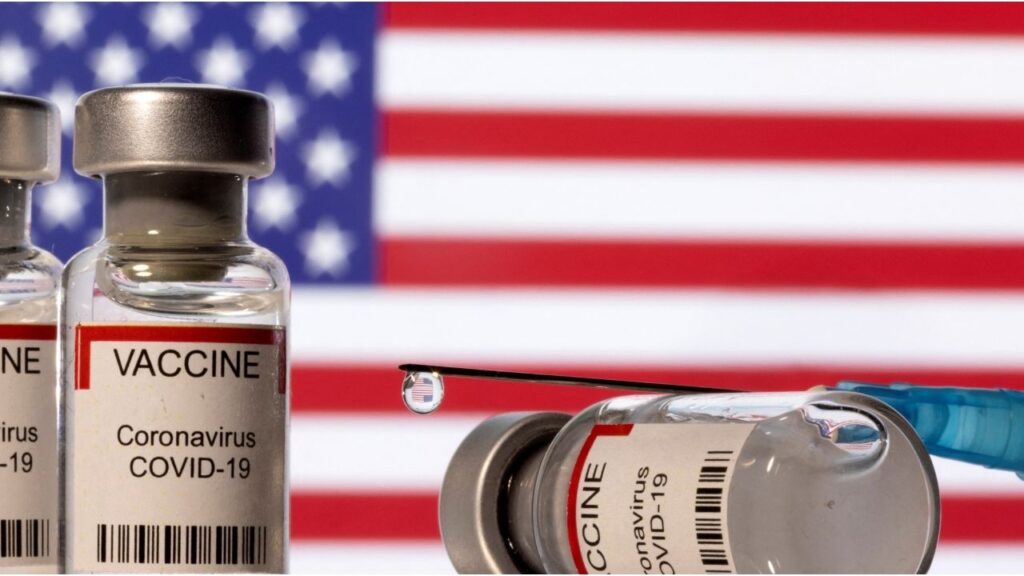Former President Donald Trump, the Republican presidential nominee, speaks during a campaign event at Cobb Energy Performing Arts Center in Atlanta, on Oct. 15, 2024. Donald Trump has flip-flopped on many issues: Today, he says that he’s pro-life; in 1999, he said “I’m very pro-choice,” Paul Krugman writes. (Damon Winter/The New York Times)

- Trump consistently supports high tariffs, risking a reversal of decades of trade policy progress and economic stability.
- Proposed tariffs could raise living costs by 4%, disproportionately impacting lower and middle-income families while benefiting the wealthy.
- Unilateral tariff increases may disrupt global trade, causing economic harm and potentially increasing global poverty and conflict.
Share
|
Getting your Trinity Audio player ready...
|

Paul Krugman
Opinion
Donald Trump has flip-flopped on many issues: Today, he says he’s pro-life; in 1999, he said, “I’m very pro-choice.” Last year, he said Republicans should “never give up!” on trying to repeal Obamacare; during September’s presidential debate, he said, “I saved it.” Three years ago, he said bitcoin “seems like a scam”; now he wants to make America the “crypto capital of the planet.”
But Trump’s desire for high tariffs has been consistent. In an interview Tuesday at the Economic Club of Chicago, he said, “To me, the most beautiful word in the dictionary is ‘tariff.’” As president, he called himself “a Tariff Man.” In fact, he imposed substantial tariffs when in office. Those actions were, however, mild compared with the tariffs he is proposing now. He initially suggested a 10% tariff on all imports, but now he talks about tariffs as high as 20%. (In Chicago, he even mused about 50%.) He wants a 60% tariff on imports from China.
Related Story: Arnold Palmer’s Daughter Reacts to Donald Trump’s References to Her ...
Most economists believe that this would be a terrible idea, and I share that view. I’m not a free-trade purist; I opposed the Obama administration’s proposed Trans-Pacific Partnership and have been generally supportive of the much tougher line the Biden-Harris administration has taken on trade.
But there’s a big difference between sophisticated, limited deviations from free trade and Trump’s desire to put what he called a “ring around the collar” of our economy.
It has never been entirely clear why Trump has a thing for tariffs. My guess is that he sees everything in terms of winners, losers and punishment: If we buy more from foreigners than they buy from us, that in his mind makes America a loser, and he wants to punish foreigners by making them pay for access to the U.S. market. Whatever he’s thinking, restoring the good old days of high tariffs is one of Trump’s key policy obsessions, and high tariffs are very likely to become a reality if he wins the election.
And when I say the good old days, I mean old. High tariffs were a consistent feature of American policy from the Civil War through 1933, but in 1934 we turned to a policy of reducing tariffs on other countries’ exports in return for lower tariffs on our exports.
This policy was spectacularly successful at overcoming opposition to tariff cuts. By the beginning of the 21st century, average U.S. tariff rates were down to the low single digits, with comparably low tariffs in other wealthy nations. Developing countries generally had much higher tariffs until the 1980s, but these became unfashionable with the rise of the so-called Washington Consensus, and many began slashing rates. By the time Trump took office in 2017, we were living in a world of relatively free trade.
Trump’s initial round of tariffs made only a small dent in this system, but the tariffs he’s proposing now would turn the clock back 90 years, raising overall tariffs to Smoot-Hawley levels.
Why do this? Trump sees tariffs as a way to reduce U.S. trade deficits and boost domestic manufacturing. Again, economists widely believe his tariffs wouldn’t achieve these goals. But before we get into the pros and cons, let’s start with some basics about tariffs and what they do.
Related Story: Democrats Embrace Trump in Desperate Bid to Save Senate Seats
How Tariffs Work
A tariff is a tax paid on foreign goods when they cross our border. In a direct sense, the tax is usually paid by the shipping company, but neither supporters nor opponents of tariffs believe that the shippers actually bear the burden of the tax — just as nobody believes that your local grocer, who must collect sales tax, pays that tax out of his or her own pocket. In fact, the easiest way to think about a tariff is that it is a selective sales tax, imposed only on goods produced abroad.
As with any sales tax, the burden of the tax falls either on consumers, who pay higher prices, or on producers, who receive lower prices.
That said, while thinking of a tariff as a sales tax is basically right, there are two complicating factors.
First, because domestically produced goods aren’t subject to a tariff, tariffs can encourage American production that competes with imports. This may sound like a good thing, but the reason some domestic producers benefit is that a tariff lets them raise prices, which in turn means that the burden on consumers can be considerably bigger than the taxes collected on imports.
The second factor is subtler: If a tariff reduces imports, it reduces U.S. demand for foreign currencies to pay for these imports, and hence reduces the dollar value of those currencies. This makes imports cheaper than they would have been otherwise, dampening the effect on consumer prices.
On the other hand, a stronger dollar hurts American exporters. Furthermore, the dollar might not rise if other countries retaliate by imposing their own tariffs — which would also hurt American exporters.
But again, for the most part, you should just think of a tariff as a particular form of sales tax.
Related Story: Fox News Says None of Its Employees Wrote Jokes for Trump to Tell at ...
A Brief History of Tariffs
We began systematically using tariffs to protect industries from foreign competition during the Civil War. However, Franklin D. Roosevelt made a fundamental break with previous tariff policy. It was widely agreed that extremely high tariffs had become counterproductive. Also, tariff-setting had become a swamp of special-interest politics. And some of Roosevelt’s officials, especially Cordell Hull, his long-serving secretary of state, believed that closer trading ties between nations were a force for world peace.
So in 1934, Roosevelt signed the Reciprocal Trade Agreements Act, under which Congress gave the president authority to negotiate tariff deals with other countries — cutting U.S. tariffs in return for lower tariffs on U.S. exports. This American system then became the template for a global trading system, the General Agreement on Tariffs and Trade. (The World Trade Organization, created in 1995, is largely dedicated to enforcing the GATT and resolving trade disputes.) Under the GATT, countries engaged in rounds of mutually agreed tariff reductions and committed to rules intended to prevent backsliding on these agreements.
This system was hugely successful in overcoming political resistance to tariff reductions.
Related Story: Arnold Palmer’s Daughter Reacts to Donald Trump’s References to Her ...
I often see assertions that tariffs have remained high in other countries, but these assertions are decades out of date. It’s true that after World War II, many developing countries imposed high tariffs in an effort to foster industrialization. But these days developing countries generally have tariff rates considerably lower than those Trump is suggesting.
There’s another point that’s important to understand about international trade policy: Presidents have a lot of discretion in setting tariff rates.
The people who created our current tariff system understood that there would sometimes be irresistible political pressures to aid industries facing import competition. So both the rules of the GATT and U.S. trade law include safety valves to release pressure when necessary, allowing a president to impose temporary tariffs under certain circumstances; to provide a breathing space to industries facing surges in imports; and to prevent what seems to be unfair competition, either because foreign companies are being subsidized or because they are “dumping” products abroad below cost.
So what would Trump’s tariffs do?
Evaluating Trump Tariffs 2.0
You don’t want to take the numbers Trump has thrown out on tariffs too literally — they’re more like concepts of a plan. Still, it’s a useful exercise to estimate the effects if he were, in fact, to go with those numbers.
The simplest, clearest effect of a tariff hike would be higher prices. In 2023, imports from China were 1.6% of gross domestic income while imports from other countries were 9.6%. So a quick-and-dirty estimate of the inflationary effect of Trump’s tariffs is 0.6×1.6+0.2×9.6 = 2.88% — call it a 3% rise in the cost of living.
The actual effect could be smaller if other countries don’t retaliate and the dollar rises. However, given that America would just have ripped up its trade agreements, there surely would be retaliation. At the same time, some American producers would take advantage of tariffs to raise prices. So a reasonable number for the effect on the cost of living might be an increase of 3% to 4%.
That, however, is only an average. Tariffs would mainly hit the prices of goods rather than services, and the share of a family’s expenditures that go to goods is inversely correlated with that family’s income. For example, lower-income families spend most of their food dollars on groceries, while high-income families eat out a lot — and much of the cost of eating at a restaurant comes from the services provided by cooks, servers and so on.
Related Story: Democrats Embrace Trump in Desperate Bid to Save Senate Seats
As a result, tariffs would raise the cost of living more for middle- and lower-income families than the average. An estimate by the Institute on Taxation and Economic Policy, which assumes a 20% tariff, finds that it would reduce the real income of families in the bottom fifth of earners by 5.7%, of middle-income families by 4.6%, but of the top 1% by only 1.4%. An analysis by the Peterson Institute for International Economics arrives at similar numbers. In other words, Trump’s 2.0 tariffs would in effect be a strongly regressive tax increase, imposing a serious burden on most families.
How big a burden? Median household income is about $80,000, so a 4% increase in the cost of living is in effect a tax of $3,200 or more on the typical family.
What the tariffs would do is shrink our economy. They would cause us to sell less of the goods we currently export — that is, stuff we’re relatively good at producing — and more stuff we aren’t that good at producing. The effect would be to make the economy less efficient and poorer.
Furthermore, the Trump tariffs would rip up the agreements that keep worldwide tariffs relatively low, inspiring both retaliation and emulation that would fragment world markets.
This would hurt even big, rich economies like those of the United States and the European Union. But it could prove catastrophic for smaller, poorer economies. The Trump tariffs could cause a spike in global poverty — and, it’s easy to imagine, global conflict.
So, what’s the bottom line on the pros and cons of Trump’s tariff proposals?
Cons: The tariffs would impose large burdens on middle- and lower-income families. They probably wouldn’t significantly reduce the trade deficit and might actually hurt American manufacturing. And unilateral U.S. tariff action would wreak havoc by fracturing the world trading system.
Pros: I can’t think of any.
–
This article originally appeared in The New York Times.
By Paul Krugman/Damon Winter
c. 2024 The New York Times Company
RELATED TOPICS:
Categories

Gaza Death Toll Tops 70,000, Health Ministry Says


















